Maackia 004: Perspectives
Hi! I’m an exhausted yet hopeful Nathan Langley and this is Maackia, a monthly newsletter where we talk about plants! (Promise.)

With my busy spring season coming to a close, I have started to shift focus from production to other related interests like photography. Plants are an obvious subject but so are larger landscapes. Over the years, photography has helped me develop an ability to see “windows” within a larger field of view, which turned out to be a very important skill in garden design. Perspectives are our entry point for engaging with the surrounding landscape and should be a primary consideration when planning a garden.
Static perspectives are probably the easiest to grasp - think seated areas in a backyard or looking outside from a kitchen window. They create an opportunity to pause within an active environment. You stop and immediately your view is constricted to what is in front of you. I often liken this to admiring a painting in a museum. You take time to study it in more detail because some part of it caught your eye and made you stop. It’s the same thing with landscapes. Benches won’t typically entice you to sit unless there is something within its view that is encouraging you to pause for a moment. Once you stop, you open up space to discover something more within that view that you wouldn’t have noticed if you just continued to walk past. This is an opportunity when designing a garden with static perspectives as you can incorporate more complexity and subtlety in those areas knowing that they are more likely to be discovered and enjoyed.
Fluid perspectives, on the other hand, are when you are moving either on foot, on a bike, or in a vehicle. Speed is an important variable to consider. You are much more likely to see details within a garden if you are out for a leisurely stroll as opposed to driving in a car. This is crucial to know when designing a space as it directly informs what kind of plants can be utilized well. Front yard gardens are very different from backyard gardens for this reason. For example, when I think of a perspective from the front of a house it is either coming from the road or approaching the front door from the driveway or main pathway. Again, speed is important. If you are driving past on a road at 50km/hr, you won’t really catch fine textures, colour, or details within a garden. Instead you might notice the overall size of the plants or their colour if they are tall enough and grouped in large enough numbers (maybe). Fluid perspectives therefore afford a different kind of opportunity than static perspectives because they aren’t fixed. They change as you move through the space and the speed you are moving at directly affects what you notice. For example, a garden can look one way when you are parking your car in the driveway, become more interesting as you approach the front door, and then look completely different as you turn around and walk back to your car. Static perspectives require more detail to remain engaging. Fluid perspectives don’t need that same level of complexity because your speed and direction affect what you see, thereby creating different levels of interest that can hold your attention in different ways.
Photography has been instrumental in developing the ability to see these perspectives because taking a picture or video immediately limits your field of view. In other words, it cuts out distractions and helps you focus on what is in front of your camera. You too can better understand static and fluid perspectives in your own space with relative ease, and you don’t have to be an avid photographer to do it. Just take videos as you walk through your space (fluid perspectives) and photographs as you stop in your usual spots (static perspectives).
For example, let’s say you are planning a new foundation bed next to the front entrance and want to increase the visual appeal of your house from the sidewalk. Let’s also say you have a rough plant list ready. Identify the new garden space using marking flags and use larger stakes with height marks to represent taller perennials or shrubs that you want to have in the garden. Then use your phone to take pictures and videos. Since walking along the sidewalk and towards the front door are fluid perspectives, take videos as you move through those spaces. Also take some photographs from inside the house looking through your front windows. Review everything on your phone or computer afterwards. Can you see the garden space like you imagined? Are the plants tall enough to make an impact from the sidewalk? Do their different heights balance well with the size of your house? What happens when you start to move closer to the house from the sidewalk? Are the plants appropriate from this new perspective? What about standing next to the front door, or looking at the garden from a window inside? You will know the answers to these questions immediately after reviewing your images and videos, and the extra effort will make all the difference in meeting your goals for the new garden.
the recipe
Fleeting Structure
I’ve finally had an opportunity to work on a design for my own yard and wanted to share it with you. It is for a space 10m long by 3m wide that is immediately adjacent to a 1m grass buffer that separates it from the driveway. Walking along the driveway is common, so the garden has a bit of extra detail for whomever is passing by to enjoy. Otherwise it has lots of repeating structure, texture, and colour for those driving by in a vehicle. The design is also broken up into blocks, so it can be adjusted to fit other spaces of varying sizes.
I’m really looking forward to eventually cooking this one up, and will share updates along the way as I get the site prepared for planting!
Ingredients:
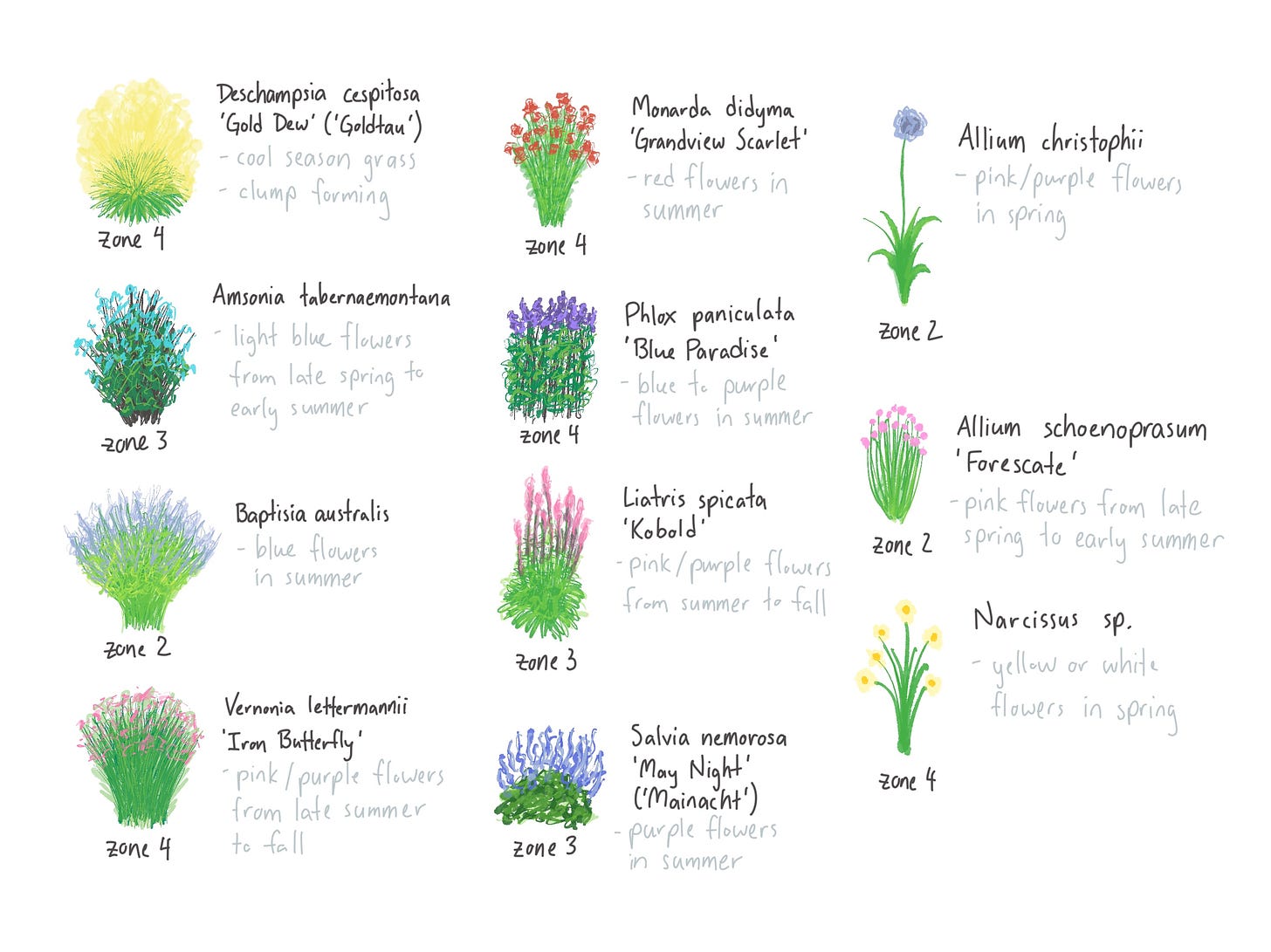
Seasons:
Overview
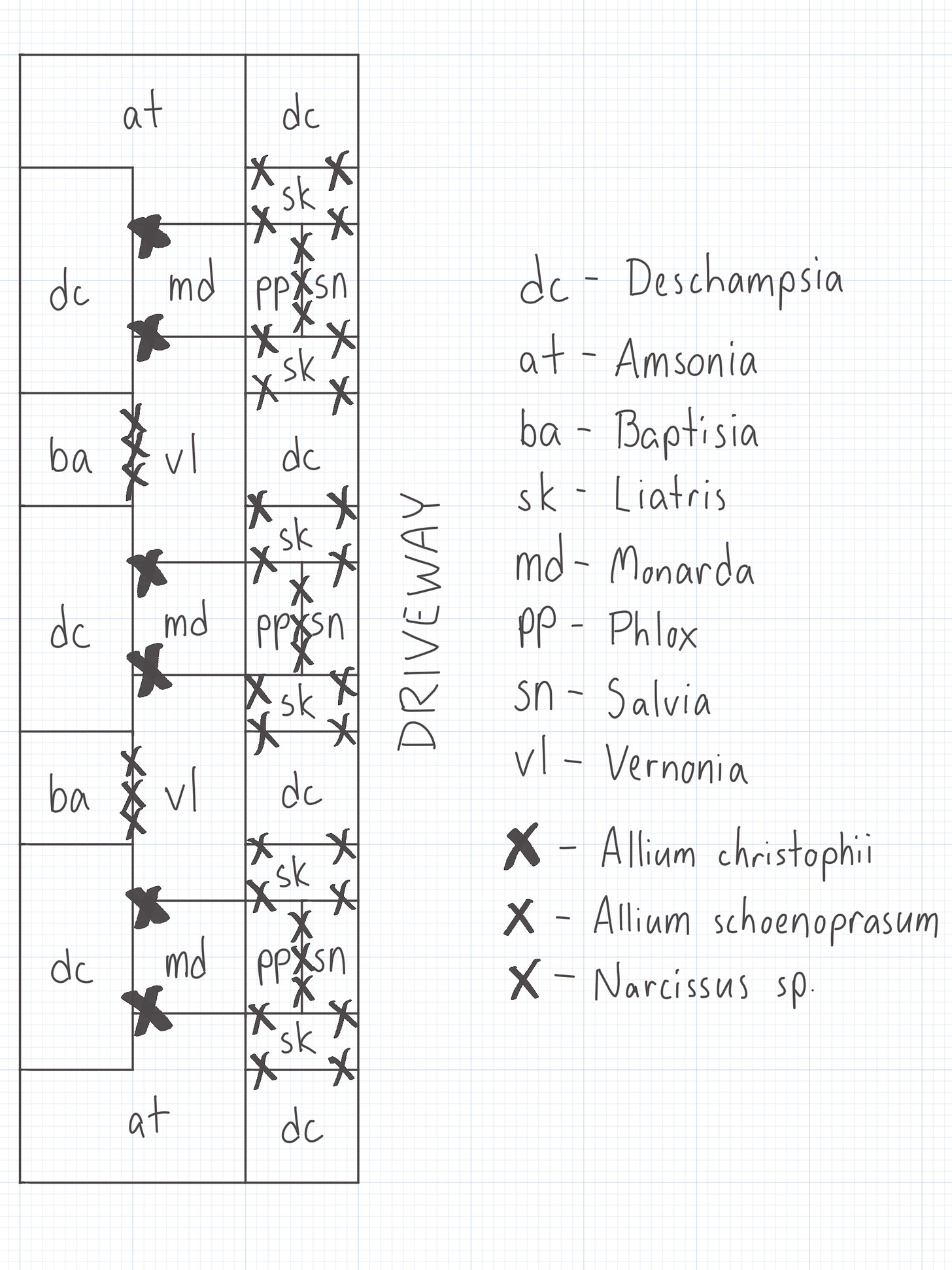
Spring
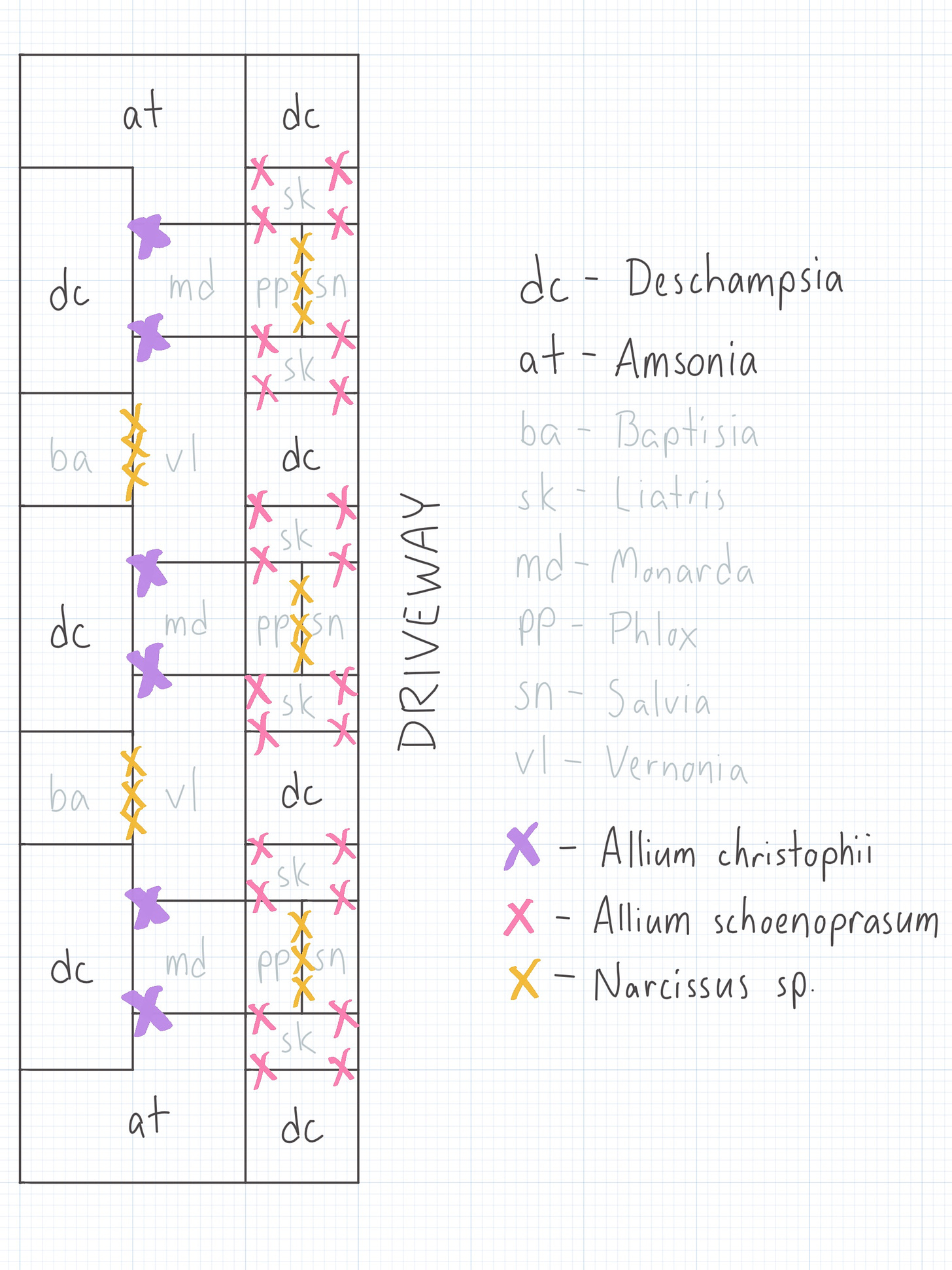
The main component within this garden is the cool season grass Deschampsia, which takes up approximately 30% of the overall space. As it grows in spring it will be balanced by Amsonia, as well as two different Allium species and Narcissus. The Allium will also carry some interest into early summer with their seed heads before fading into the background.
Summer
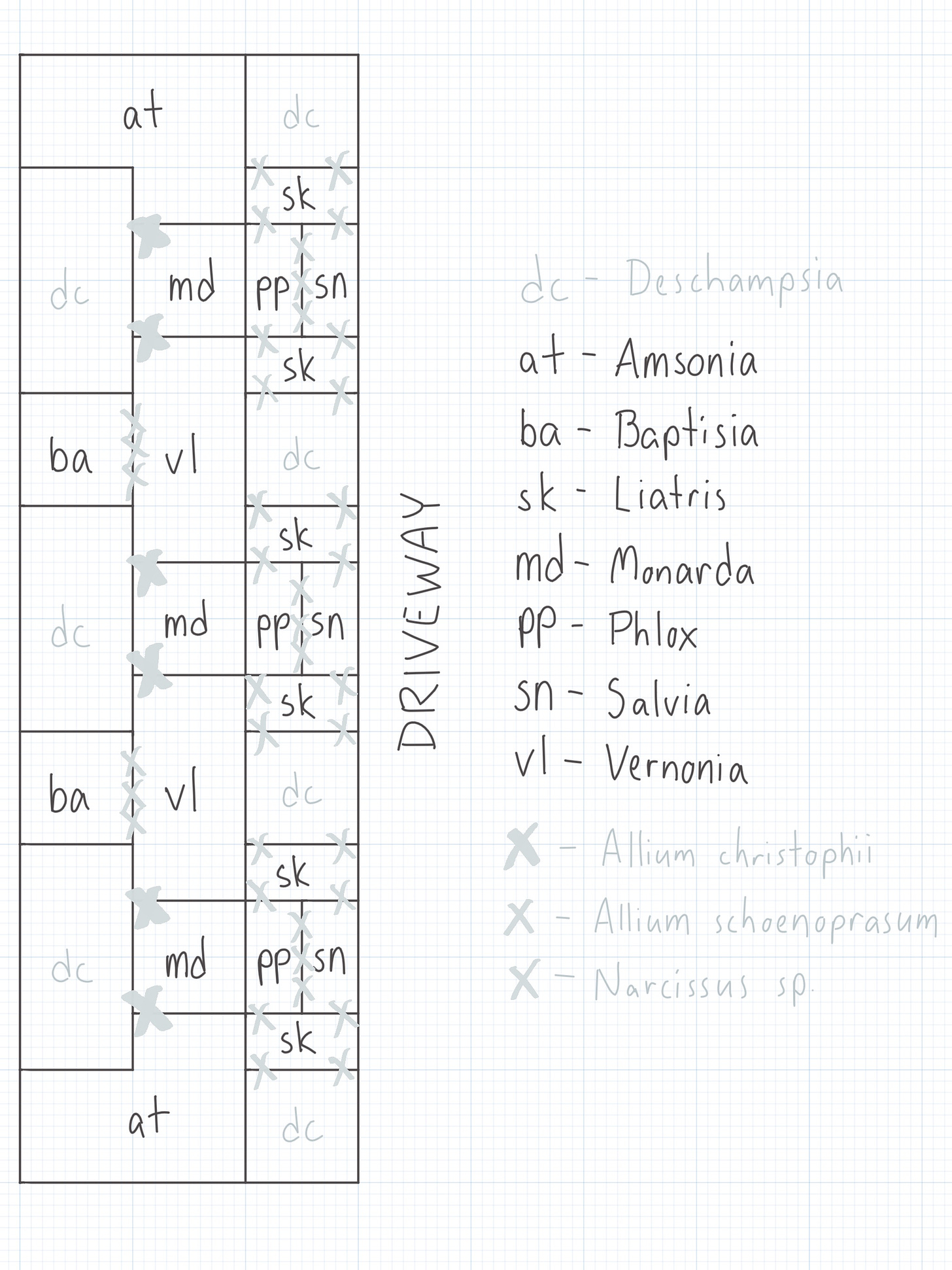
Summer is the main flowering time for the garden with Baptisia, Monarda, and Phloxcarrying the visual interest. Amsonia will stop flowering in early summer, while Vernonia and Liatris will remain hidden until late summer. Salvia is the shortest perennials used, but plays an important roll as an anchor with its purple flowers. The other perennials will either be on the blue or pink side of purple.
Fall
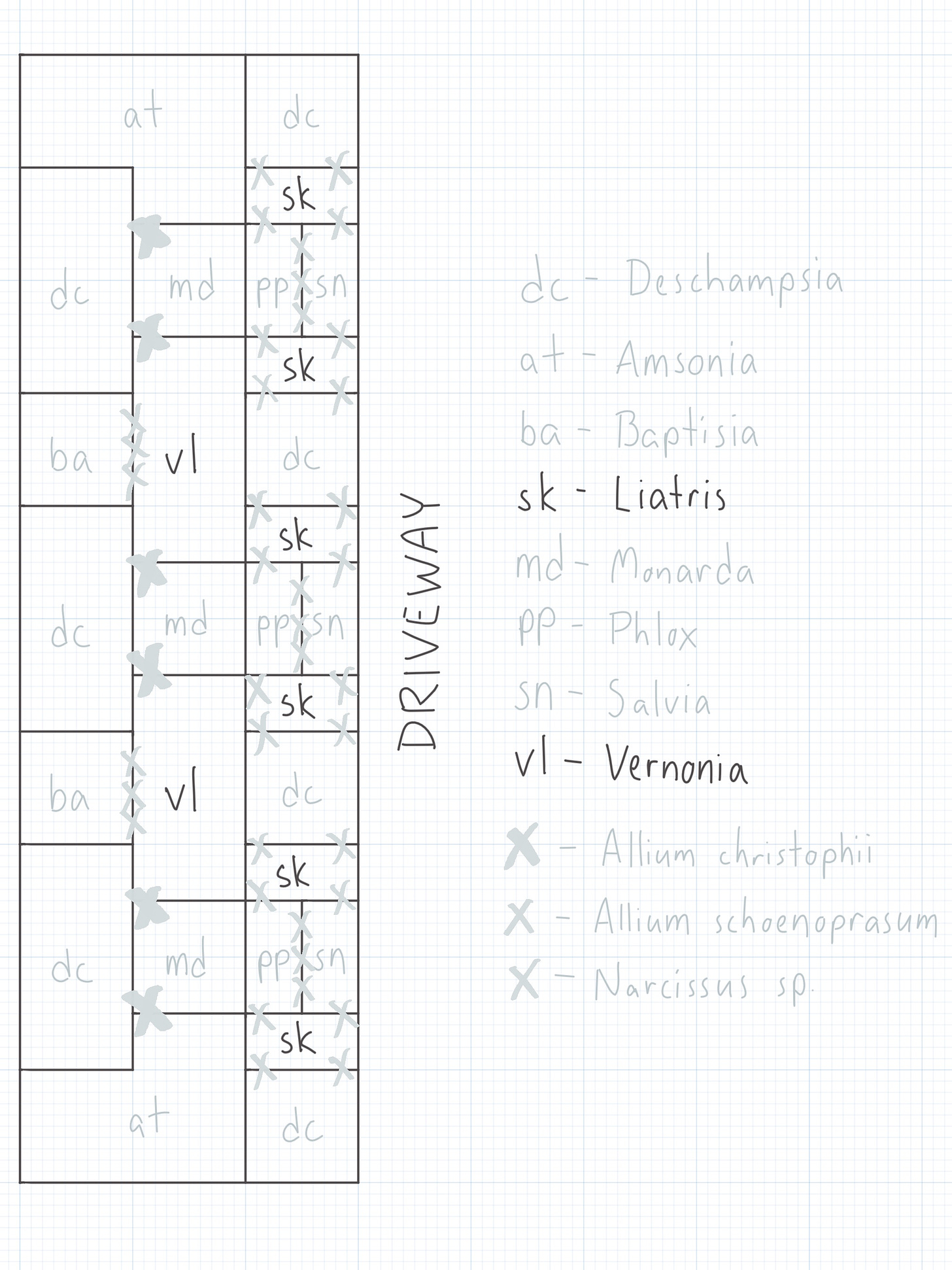
Fall will be fairly laid back within the garden as Liatris and Vernonia will be the only plants in flower. However, Deschampsia will look stunning in the fall sunlight. There will also be some fall colour interest from Amsonia as it goes dormant, while Baptisiaand Monarda add some interesting seed displays.